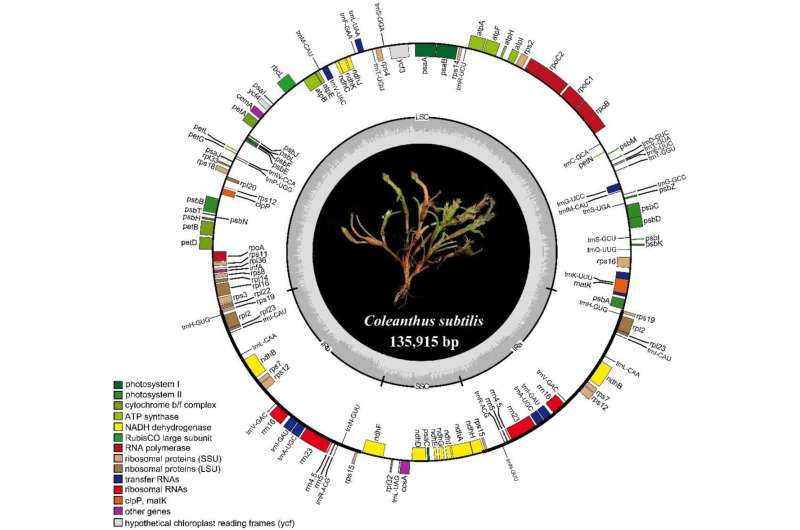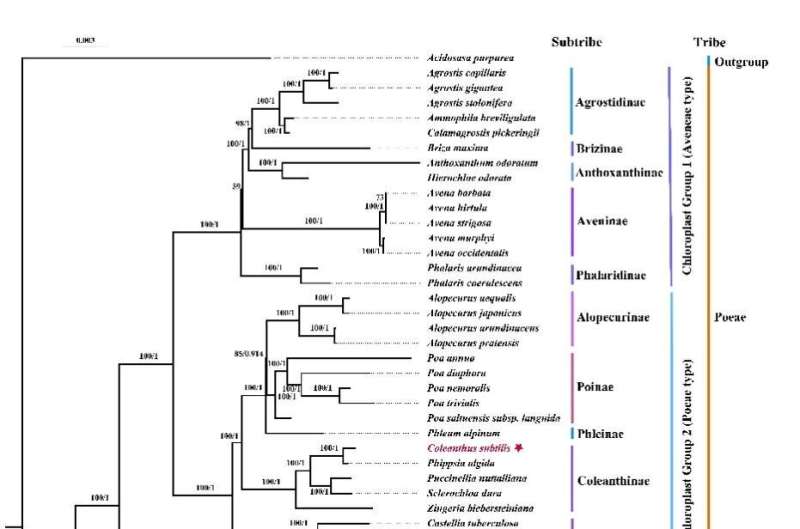Complete chloroplast genome of Coleanthus subtilis, a protected rare species

Coleanthus subtilis (Tratt.) Seidel (Poaceae) is a rare grass in the monotypic genus Coleanthus Seidl. It has been protected in many countries, such as the Czech Republic, North America and China, because of the extremely short life cycle, strict habitat and breeding conditions, and habitat destruction. In addition, C. subtilis has a remarkable ability to reappear in its previous habitats after long time intervals.
In March 2021, researchers collected specimens on the beaches of the Yangtze River, and subsequently, it was discovered by researchers from the Wuhan Botanical Garden (WBG) of the Chinese Academy of Sciences in the Songhua River basin in Harbin, which is nearly 100 years after its last appearance in China.
Interestingly, its distribution has never been recorded along the Yangtze River before, and the factors responsible for this particular distribution are unclear. The phylogenetic position of C. subtilis and the composition of the subtribe Coleanthinae are controversial, and the absence of information on the chloroplast genome greatly limits the comprehensive understanding of its phylogeny.
The researchers of WBG sequenced and assembled the chloroplast genome of C. subtilis for the first time, and did a comparative and phylogenetic analysis with other species in the family Poaceae.
The chloroplast (cp) genome of C. subtilis exhibited a tetrad structure of 135915 bp in length, which is similar to the length and structural characteristics of cp genomes of other Poaceae species. The accD gene and the introns of both clpP and rpoC1 genes have been lost within the cp genomes of C. subtilis, while ycf1, ycf2, ycf15 and ycf68 were pseudogenes, which is a relatively common phenomenon in Poaceae.

Although the cp genome structure of C. subtilis was relatively conserved, 26 simple sequence repeats and 13 highly variable loci were detected, which could be developed as important genetic markers for the Poaceae.
Furthermore, the results of the phylogenetic analysis strongly supported that Coleanthus and Phippsia were sister taxa to each other and enlightened the relationships between Coleanthus, Zingeria and Colpodium.
This study presents the initial chloroplast genome report of C. subtilis, providing an essential data reference for further research on its origin and has implications for population genetics and conservation of this species.
The research was published in Frontiers in Plant Science with the title "Comparative and phylogenetic analysis based on the chloroplast genome of Coleanthus subtilis (Tratt.) Seidel, a protected rare species of monotypic genus."
More information: Jing Ren et al, Comparative and Phylogenetic Analysis Based on the Chloroplast Genome of Coleanthus subtilis (Tratt.) Seidel, a Protected Rare Species of Monotypic Genus, Frontiers in Plant Science (2022). DOI: 10.3389/fpls.2022.828467
Journal information: Frontiers in Plant Science
Provided by Chinese Academy of Sciences



















